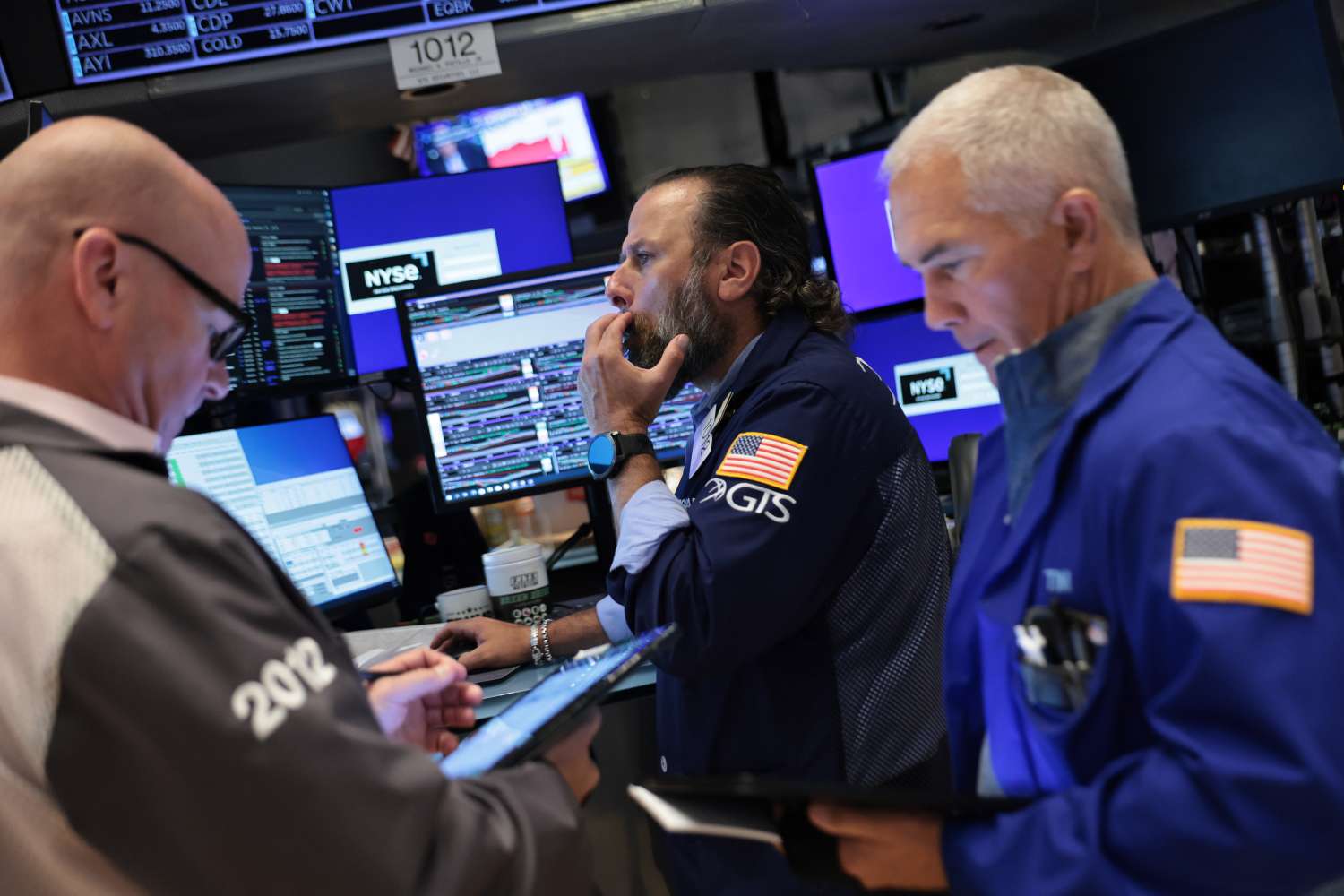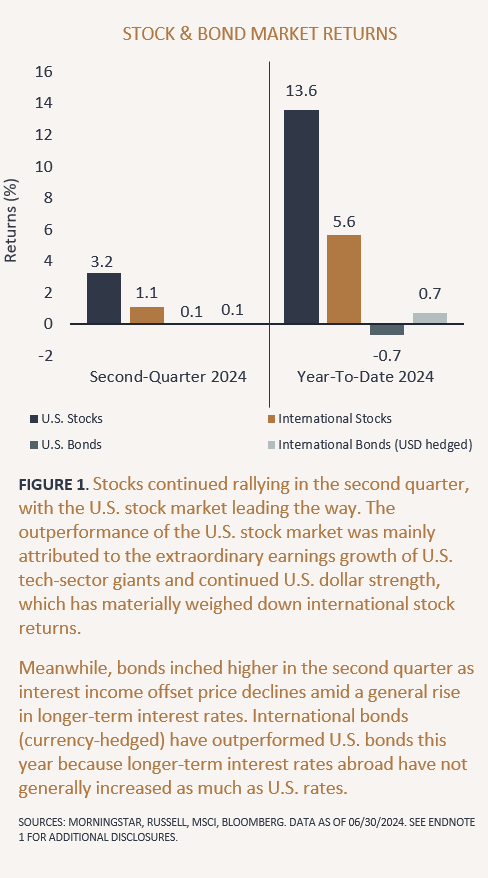Market Resilience Despite Escalating Tariff Risks
In early April, President Trump’s sweeping “Liberation Day” tariffs—threatening 10–55% duties on imports across dozens of countries—triggered a sharp sell-off: the S&P 500 plunged over 3%, wiping out more than $3 trillion in market value in just days Yet by mid‑June, stocks had fully recovered, and by early July, Wall Street indices hit fresh record highs, underscoring the market’s remarkable resilience despite headline volatility.
This pattern reflects investors increasingly discounting tariff threats as temporary or reversible—leaning into what analysts call the “TACO trade”, betting that Trump “Always Chickens Out” on lasting policies
Fed Commentary: Cautious Optimism on Rate Cuts
The June Federal Open Market Committee (FOMC) minutes confirmed that most policymakers see rate cuts as appropriate later in 2025, but voiced caution about doing so in July due to expected inflation pressure from tariffs The federal funds rate remains at 4.25–4.50%, with participants agreeing future cuts depend on data and upside risks to inflation
Despite subdued near-term confidence about July cuts, market sentiment remains supportive of rate easing in the coming months—boosting equity valuations and fueling the rally.
Drivers Behind the Market’s Ascent
1. Retail Inflows & Equity Demand
Retail investors continue to pour capital into equities and ETFs robustly. According to JPMorgan, retail traders contributed $270 billion in the first half of 2025 and are projected to add a further $360 billion, sparking 5–10% further upside in markets by year-end Technology and AI-related tickers have attracted significant buying.
2. Strong Earnings and Forward Momentum
Corporate earnings remain resilient—78% of Q2 companies have beaten estimates. Analysts from Goldman Sachs and Bank of America raised their year-end S&P 500 targets (6,900 and 6,600–6,300 respectively), citing robust earnings growth (around 7% annually), strong fundamentals, and investor under-positioning
3. Tech Leadership and AI Power
Tech stocks continue to dominate the gains. Nvidia recently crossed a $4 trillion market capitalization, helping drive Nasdaq gains and broadening investor belief in an AI-led cycle. The sector now represents over 45% of S&P 500 weight, with strong momentum in software, semiconductors, and cloud infrastructure
Tariffs: A Persistent Threat—or a Policy Mirage?
Initial Shock, Later Softer Impact
Initial tariff announcements triggered quick corrections, but markets swiftly rebounded after delays and rollbacks. For instance, after announcing new tariffs on copper, pharmaceuticals, and goods from countries including Japan and Canada, the August launch was postponed until August 1—giving breathing room for markets to recover.
GDP Headwinds and Sector Risks
Independent research from the Budget Lab estimates tariffs could shave off 0.7% of GDP in 2025, reduce manufacturing output by 2%, and raise auto prices by 13.5%—pressures that disproportionately affect trade-sensitive industries like agriculture, autos, and industrial manufacturing
Policy Uncertainty and Growth Risks
JPMorgan warns of a 40% chance of stagflation in the second half of 2025—slower growth around 1.3%, elevated inflation, and underperformance in key metrics like the trade balance and investment flows.
Valuation Landscape & Market Structure
Rich Multiples, Narrow Breadth
Equity valuations remain high: the S&P 500 trades at around 22–24× forward earnings, well above its 30-year average (~17×) Despite market highs, breadth remains weak—only about 50% of S&P 500 stocks trade above their 200-day moving average, driven by tech megacaps vs. broader index firmness
Dollar Correlation and Market Dynamics
Typically, equities and the U.S. dollar move inversely. This year, both have declined together—a correlation more typical of emerging markets—indicating heightened volatility tied to political uncertainty and trade policy ambiguity. Goldman Sachs warns the dollar may continue behaving like a risk‑mode currency unless independence and policy clarity return
Sector & Geographic Dynamics
Domestic vs International Stocks
U.S. equities and large caps dominate the momentum—small-cap stocks lag due to higher tariff exposure and sensitivity to funding costs. In contrast, international markets, particularly emerging markets and Europe (MSCI EAFE and EM indices), outperformed in Q2 as the dollar weakened
Fixed Income as a Safe Haven
Bond markets responded to geopolitical and tariff-linked uncertainty, with long-term yields falling modestly in June amid global tension and safe haven demand, even as short-term rates remained anchored due to the Fed’s cautious stance
Expert Takeaways: Views from the Street
Diversified Roundtable Picks
Barron’s Roundtable highlighted diverse strategies amid market strength—some experts counseled caution due to high valuations and fiscal deficits, favoring utilities and insurance, while others remain bullish on AI names like Nvidia, AMD, and even value plays like cruise operators or media stocks
Major Broker Views
- Goldman Sachs forecasts S&P 500 reaching 6,900 over 12 months, recommending a balanced portfolio spanning growth (software), cyclicals (materials), and defensives (utilities)
- Bank of America sees resilient fundamentals and suggests no rate cuts needed in 2025, expecting strong consumer support and tariff revenues to aid the deficit situation
- JPMorgan anticipates continued equity gains amid potential stagflation, forecasting a 6,000 S&P target driven by tech, strong consumption, and robust inflows despite trade uncertainties.
Risks Ahead: The Watchlist
1. Tariff Drill-Down: New tariffs—especially on Canada, copper, pharmaceuticals—could spar inflation and dent corporate margins, testing Fed resolve.
2. Fed Uncertainty: If data surprises on inflation or employment, Fed may delay or abandon rate cuts, lowering equity appeal.
3. Earnings Plateau: Should tech companies or consumer sectors miss high guidance, narrow breadth could shift sentiment quickly.
4. Market Structure Flaws: High concentration in a few names makes the index vulnerable to shocks in big-cap stocks.
5. Macro Shocks: Geopolitical events (e.g. Taiwan, Middle East escalation) could disrupt supply chains and investor sentiment—despite current market indifference.
Outlook & Strategy Considerations
Portfolio Strategies
- Core exposure: Maintain holdings in big-cap tech/AI while gradually rotating into undervalued sectors like value stocks, insurance, energy, and healthcare.
- Hedge selectively: Use options or partial hedges in case of sudden sentiment shifts from trade shocks or Fed changes.
- Monitor macro cues: Stay alert to inflation metrics, trade headlines, GDP revisions, and corporate guidance.
Tailwinds Remain… For Now
Record equity highs, consistent retail participation, and encouraging corporate results suggest confidence—but depend heavily on continued Fed support and assumed tariff rollback.
…But Risks Linger
Valuations are rich; breadth is narrow; trade policy remains volatile; and rate cut timing—and Fed independence—are uncertain. The market may still price in benign outcomes prematurely.
Conclusion: Optimism Meets Uncertainty
By mid-2025, U.S. equity markets have proven resilient, rebounding from tariff-induced crashes and leveraging AI-led optimism, retail inflows, and potential monetary easing. Analysts from Goldman Sachs, JPMorgan, and Bank of America project further gains—indeed, bullish sentiment is widespread despite policy risk.
Yet: markets today face a paradox. Stock prices reflect optimism, while valuations, narrow participation, currency behavior, and trade uncertainties hint at latent fragility. The Fed’s cautious guidance and rising inflation risk compound complexity.






Leave a Reply